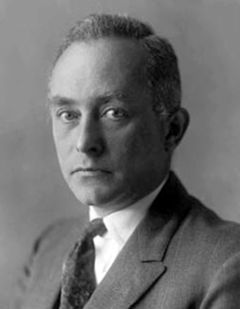6.13C: Born Forces
- Page ID
- 33352
\( \newcommand{\vecs}[1]{\overset { \scriptstyle \rightharpoonup} {\mathbf{#1}} } \)
\( \newcommand{\vecd}[1]{\overset{-\!-\!\rightharpoonup}{\vphantom{a}\smash {#1}}} \)
\( \newcommand{\id}{\mathrm{id}}\) \( \newcommand{\Span}{\mathrm{span}}\)
( \newcommand{\kernel}{\mathrm{null}\,}\) \( \newcommand{\range}{\mathrm{range}\,}\)
\( \newcommand{\RealPart}{\mathrm{Re}}\) \( \newcommand{\ImaginaryPart}{\mathrm{Im}}\)
\( \newcommand{\Argument}{\mathrm{Arg}}\) \( \newcommand{\norm}[1]{\| #1 \|}\)
\( \newcommand{\inner}[2]{\langle #1, #2 \rangle}\)
\( \newcommand{\Span}{\mathrm{span}}\)
\( \newcommand{\id}{\mathrm{id}}\)
\( \newcommand{\Span}{\mathrm{span}}\)
\( \newcommand{\kernel}{\mathrm{null}\,}\)
\( \newcommand{\range}{\mathrm{range}\,}\)
\( \newcommand{\RealPart}{\mathrm{Re}}\)
\( \newcommand{\ImaginaryPart}{\mathrm{Im}}\)
\( \newcommand{\Argument}{\mathrm{Arg}}\)
\( \newcommand{\norm}[1]{\| #1 \|}\)
\( \newcommand{\inner}[2]{\langle #1, #2 \rangle}\)
\( \newcommand{\Span}{\mathrm{span}}\) \( \newcommand{\AA}{\unicode[.8,0]{x212B}}\)
\( \newcommand{\vectorA}[1]{\vec{#1}} % arrow\)
\( \newcommand{\vectorAt}[1]{\vec{\text{#1}}} % arrow\)
\( \newcommand{\vectorB}[1]{\overset { \scriptstyle \rightharpoonup} {\mathbf{#1}} } \)
\( \newcommand{\vectorC}[1]{\textbf{#1}} \)
\( \newcommand{\vectorD}[1]{\overrightarrow{#1}} \)
\( \newcommand{\vectorDt}[1]{\overrightarrow{\text{#1}}} \)
\( \newcommand{\vectE}[1]{\overset{-\!-\!\rightharpoonup}{\vphantom{a}\smash{\mathbf {#1}}}} \)
\( \newcommand{\vecs}[1]{\overset { \scriptstyle \rightharpoonup} {\mathbf{#1}} } \)
\( \newcommand{\vecd}[1]{\overset{-\!-\!\rightharpoonup}{\vphantom{a}\smash {#1}}} \)
\(\newcommand{\avec}{\mathbf a}\) \(\newcommand{\bvec}{\mathbf b}\) \(\newcommand{\cvec}{\mathbf c}\) \(\newcommand{\dvec}{\mathbf d}\) \(\newcommand{\dtil}{\widetilde{\mathbf d}}\) \(\newcommand{\evec}{\mathbf e}\) \(\newcommand{\fvec}{\mathbf f}\) \(\newcommand{\nvec}{\mathbf n}\) \(\newcommand{\pvec}{\mathbf p}\) \(\newcommand{\qvec}{\mathbf q}\) \(\newcommand{\svec}{\mathbf s}\) \(\newcommand{\tvec}{\mathbf t}\) \(\newcommand{\uvec}{\mathbf u}\) \(\newcommand{\vvec}{\mathbf v}\) \(\newcommand{\wvec}{\mathbf w}\) \(\newcommand{\xvec}{\mathbf x}\) \(\newcommand{\yvec}{\mathbf y}\) \(\newcommand{\zvec}{\mathbf z}\) \(\newcommand{\rvec}{\mathbf r}\) \(\newcommand{\mvec}{\mathbf m}\) \(\newcommand{\zerovec}{\mathbf 0}\) \(\newcommand{\onevec}{\mathbf 1}\) \(\newcommand{\real}{\mathbb R}\) \(\newcommand{\twovec}[2]{\left[\begin{array}{r}#1 \\ #2 \end{array}\right]}\) \(\newcommand{\ctwovec}[2]{\left[\begin{array}{c}#1 \\ #2 \end{array}\right]}\) \(\newcommand{\threevec}[3]{\left[\begin{array}{r}#1 \\ #2 \\ #3 \end{array}\right]}\) \(\newcommand{\cthreevec}[3]{\left[\begin{array}{c}#1 \\ #2 \\ #3 \end{array}\right]}\) \(\newcommand{\fourvec}[4]{\left[\begin{array}{r}#1 \\ #2 \\ #3 \\ #4 \end{array}\right]}\) \(\newcommand{\cfourvec}[4]{\left[\begin{array}{c}#1 \\ #2 \\ #3 \\ #4 \end{array}\right]}\) \(\newcommand{\fivevec}[5]{\left[\begin{array}{r}#1 \\ #2 \\ #3 \\ #4 \\ #5 \\ \end{array}\right]}\) \(\newcommand{\cfivevec}[5]{\left[\begin{array}{c}#1 \\ #2 \\ #3 \\ #4 \\ #5 \\ \end{array}\right]}\) \(\newcommand{\mattwo}[4]{\left[\begin{array}{rr}#1 \amp #2 \\ #3 \amp #4 \\ \end{array}\right]}\) \(\newcommand{\laspan}[1]{\text{Span}\{#1\}}\) \(\newcommand{\bcal}{\cal B}\) \(\newcommand{\ccal}{\cal C}\) \(\newcommand{\scal}{\cal S}\) \(\newcommand{\wcal}{\cal W}\) \(\newcommand{\ecal}{\cal E}\) \(\newcommand{\coords}[2]{\left\{#1\right\}_{#2}}\) \(\newcommand{\gray}[1]{\color{gray}{#1}}\) \(\newcommand{\lgray}[1]{\color{lightgray}{#1}}\) \(\newcommand{\rank}{\operatorname{rank}}\) \(\newcommand{\row}{\text{Row}}\) \(\newcommand{\col}{\text{Col}}\) \(\renewcommand{\row}{\text{Row}}\) \(\newcommand{\nul}{\text{Nul}}\) \(\newcommand{\var}{\text{Var}}\) \(\newcommand{\corr}{\text{corr}}\) \(\newcommand{\len}[1]{\left|#1\right|}\) \(\newcommand{\bbar}{\overline{\bvec}}\) \(\newcommand{\bhat}{\widehat{\bvec}}\) \(\newcommand{\bperp}{\bvec^\perp}\) \(\newcommand{\xhat}{\widehat{\xvec}}\) \(\newcommand{\vhat}{\widehat{\vvec}}\) \(\newcommand{\uhat}{\widehat{\uvec}}\) \(\newcommand{\what}{\widehat{\wvec}}\) \(\newcommand{\Sighat}{\widehat{\Sigma}}\) \(\newcommand{\lt}{<}\) \(\newcommand{\gt}{>}\) \(\newcommand{\amp}{&}\) \(\definecolor{fillinmathshade}{gray}{0.9}\)Born forces are one type of force that acts upon atoms in an ionic lattice. In simplest terms, because ions have some finite size, electron-electron and nucleus-nucleus interactions occur and give rise to repulsion forces and electrostatic potential, both called Born forces.
Introduction
Lattice energy is the energy released when gaseous cations and anions bond to form a solid ionic compound. With the Born-Lande equation one can calculate the lattice energy of a crystalline ionic compound. Born and Lande theorized around the turn of the century, that lattice energy of a crystalline ionic compound could be found by calculating terms of electrostatic potential and a repulsive potential.
\[\Delta U = \dfrac{-LA|Z_+|\,|Z_-| e^2}{4\pi\epsilon_o r} \tag{1}\]
with
- \(L\) is the avagadro's constant (6.022 \times 10^{23}\) and
- '\(A\) is the Madelung Constant
The first potential is the force of attraction. It is a negative value because it pulls the two atoms closer together, and the forming of a bond is energetically favorable. The negative value of Avogadro’s number (6.022x1023) times a Madelung Constant (varies) times the absolute value of the charge of the cation times the absolute value of the charge of the anion, times the charge of an electron (1.6022x10-19 C) all over four times pi times the emissivity of space times the ion radius.
\[\Delta U = \dfrac{-LB}{r^n} \tag{2}\]
with
- \(B\) is the repulsion coefficient and
- '\(N\) is the Born exponent
The second equation is the repulsive force. It found by multiplying Avogadro’s number (6.022x1023) by a repulsion coefficient, and dividing that by the ionic radius raised to the power of a Born exponent (some number between 5 and 12).
Implications of Born Forces
Attractive forces are affected by the charge of the ions and their radii. Ions with large charges (like Mg7+ or O2-) have greater attractive potential than those with smaller charges (like Na1+ or F1-). Smaller ions (like Li+ or Cl-) also have greater electrostatic potential than larger ions (like I- or Cs+). The Madelung constant is dependent on the crystal structure type. This value is found in tables online or in a text, but in general can be thought of as large with larger cation-cation distances and anion-anion distances. A structure with fluorite geometry has a relatively large A value, whereas rock salt crystals have a much lower A value.
Repulsive forces are mainly determined by the born exponent. The Born exponent is dictated by the electronic configuration of the noble gas in the row above it on the periodic table (a closed shell).
Max Born was a German physicist and mathematician who was instrumental in the development of quantum mechanics. He also made contributions to solid-state physics and optics and supervised the work of a number of notable physicists in the 1920s and 30s.

Born won the 1954 Nobel Prize in Physics for his "fundamental research in Quantum Mechanics, especially in the statistical interpretation of the wave function".
References
- Housecroft, E. Catherine et.al.. Inorganic Chemistry, Third Edition. Person Education Limited. Harlow, England. 2008.
- McQuarrie, A. Donald et. al.. Physical Chemistry, A Molecular Approach. University Sciience Books. USA. 1997.
- Petrucci, H. Ralph et. al.. General Chemistry, Ninth Edition. Prentice Hall. Upper Saddle River, New Jersey. 2007.
- Brown, I.D. et. al.. The Chemical Bond in Inorganic Chemistry, IUCr monographs in crystallography. Oxford University Press. 2002.
Problems
Plug in and cancel SI units to the Born-Lande equation to find the units of lattice energy, electrostatic potential, and repulsion forces. All energies are in units of kJ/mol
- Looking at the equations for Born forces and a periodic table what do you expect to have a higher lattice energy (most negative enthalpy): NaCl, LiF, or KCl?
- Looking at the equations for Born forces and a periodic table what do you expect to have a higher lattice energy (most negative enthalpy): NaOH, Al2O3, or Mg(OH)2?
- What lattice structure type Rutile or CsCl has the greater relative Madelung constant? (You need not look in a table if you know the shapes of these crystal geometries)
- What are the oxidation states of Barium and Oxygen in the crystalline lattice BaO?
- Calculate the lattice energy of Sodium Chloride using the Born-Lande equation (find all needed information from tables). Compare this calculated value to experimentally found value of -787kJ/mol.
Solutions
- LiF
- Al2O3
- Rutile
- Ba2+ and O2-
- The calculated value is -756kJ/mol.

